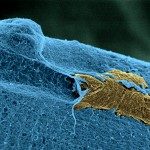Link to Pubmed [PMID] – 15904939.
Neuropsychologia 2005;43(14):1983-9
Lesions affecting the ventral cortex of the left temporal lobe commonly yield a selective reading impairment known as pure alexia. It is thought to result from the disruption or deafferentation of the Visual Word Form Area (VWFA), a region in the left lateral occipitotemporal sulcus activated whenever normal subjects are viewing alphabetic strings. Most pure alexic patients retain the ability to identify single letters, and develop a strategy of letter-by-letter (LBL) reading. We recently studied fMRI activations in LBL readers and clarified the underlying mechanisms. However, LBL reading is a dynamic process which may improve over months or years of practice, although the cerebral bases of this continuing improvement are currently unknown. We had the opportunity to run the same behavioural testing and fMRI experiment a second time in an alexic patient, 8 months after collecting the data reported by Cohen et al. [Cohen, L., Henry, C., Dehaene, S., Molko, N., Lehéricy, S., Martinaud, O., Lemer, C., and Ferrieux, S. (2004). The pathophysiology of letter-by-letter reading. Neuropsychologia, 42, 1768-1780]. We analyze the changes that occurred over this period in the pattern of reading-related activations, while the patient’s LBL reading improved. The activation level decreased in most of the overall network between the two sessions. This general trend contrasted with a focal increase restricted to specific left frontal and parietal areas. When studying the contrast between words and consonant strings, which may be taken as a correlate of LBL reading, we also found a general decrease, except for similar left frontal and parietal regions, which showed a significant increase. We suggest that the pattern of evolution fits with the minimal hypothesis of normal strategic abilities and skill learning, associated with perceptual tuning in right-hemispheric structures able to substitute the disrupted VWFA.

